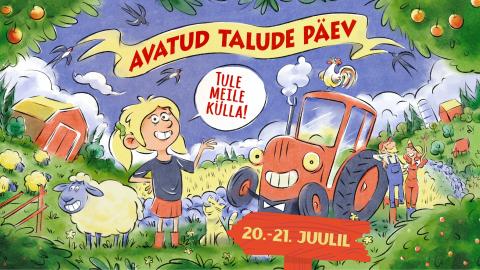
Open Farm Days in Estonia

About this good practice
People are leaving rural areas and moving to cities and children and young people have no idea how food is produced. There is a need to improve the image of rural life and increase the motivation of young people to engage in agriculture and food production.
The objectives for Open Farm Days is to show wider audience agriculture and the diversity of rural life, teach children about local food and rural life, to improve the image of rural life and agriculture. Main target group is families with children up to 14 years old.
The main stakeholders of the project are
- small family farms who focus on sustainable practices
- agricultural producers involved in the cultivation of crops and livestock
- local food producers who create products such as cheeses, jams, and craft beers
- hobby farms like small-scale farms that focus on various activities such as handicrafts, theatre or even zoos, offering unique experiences and products to the visitors
Main organizers of the Open Farm Days:
- Ministry of Regional Affairs and Agriculture – Responsible for Media campaign and communication
- Estonian Rural Network – Communication with farms, Registration of farms and data and feedback collection
- Leader Local Action Groups – communication with farms in their area
The Open Farm Days takes place in two-day format. Participating farms are open on one weekend from 10:00 a.m. to 5:00 p.m.
Expert opinion
Resources needed
The event is organized by the people of the Agricultural Research Centre, the Farmers Federation, and the Chamber of Agriculture and Commerce and the Ministry of Regional Development and Agriculture.
Budget 50 000 euros. Financed by European Agricultural Fund for Rural Development.
Evidence of success
First the event was held on 2015. Almost 150 farms participated, and 45 000 visits were made.
The numbers have annually increased since. On 2024 already 358 farms participated, and over 300 000 visits were made.
71 % of people visit the farms with family, 22% with friends and 7% alone.
Feedback from the people says, that 96% of them like the idea and 87% know the aim of the event.
Potential for learning or transfer
Every year the number of participating food producers and the number of visitors increases. The feedback has been positive. The image of rural life is improving.
Suggestions: It is most important to inform people about the event early on through all major communication channels – social media, outdoor media, newspapers.
Secondly, it is extremely important to support participating farms with communication tools – for example signs (2 per farm), parking signs (1 per farm), badges (10 per farm), posters 1-2 per farm, borderlines for parking plots etc.
For the event to be successful, the necessary information must be made available to participating food producers early on. A website with key contacts, downloadable materials, and samples is good practice. Seminars to share experiences from previous years also work well.

